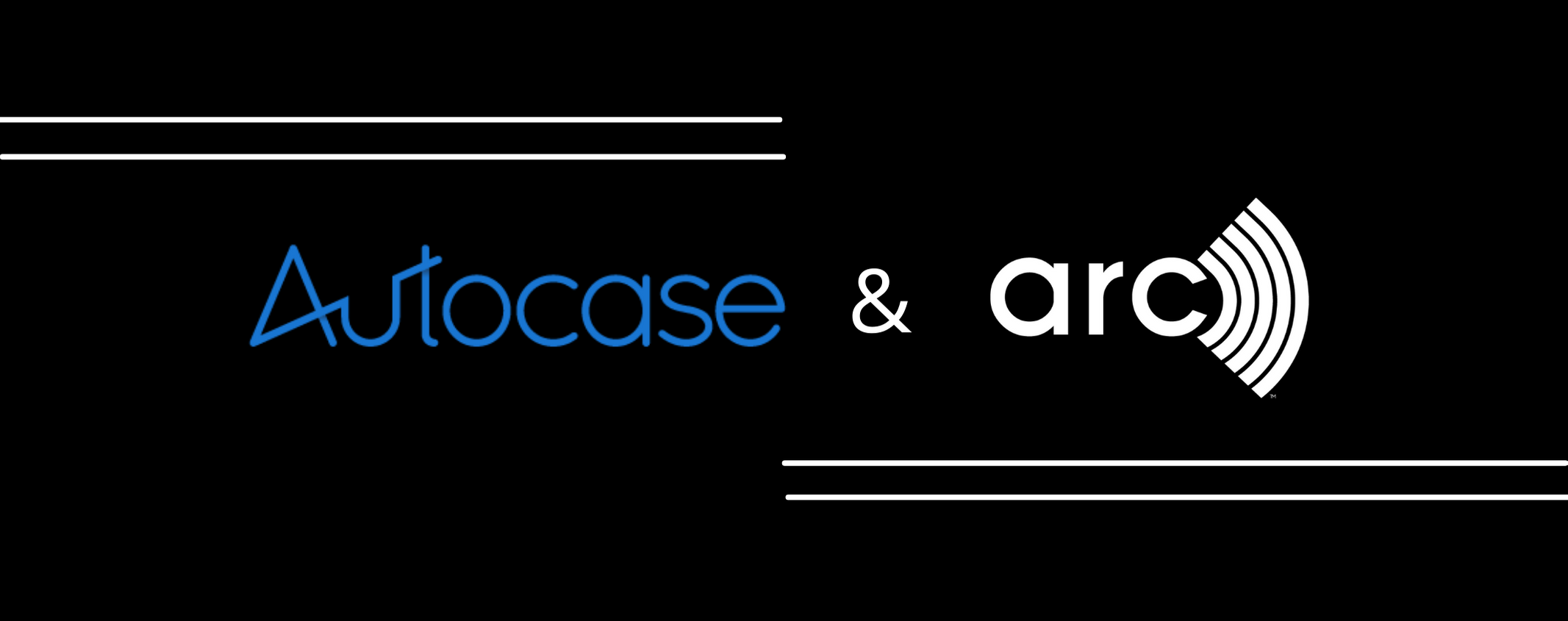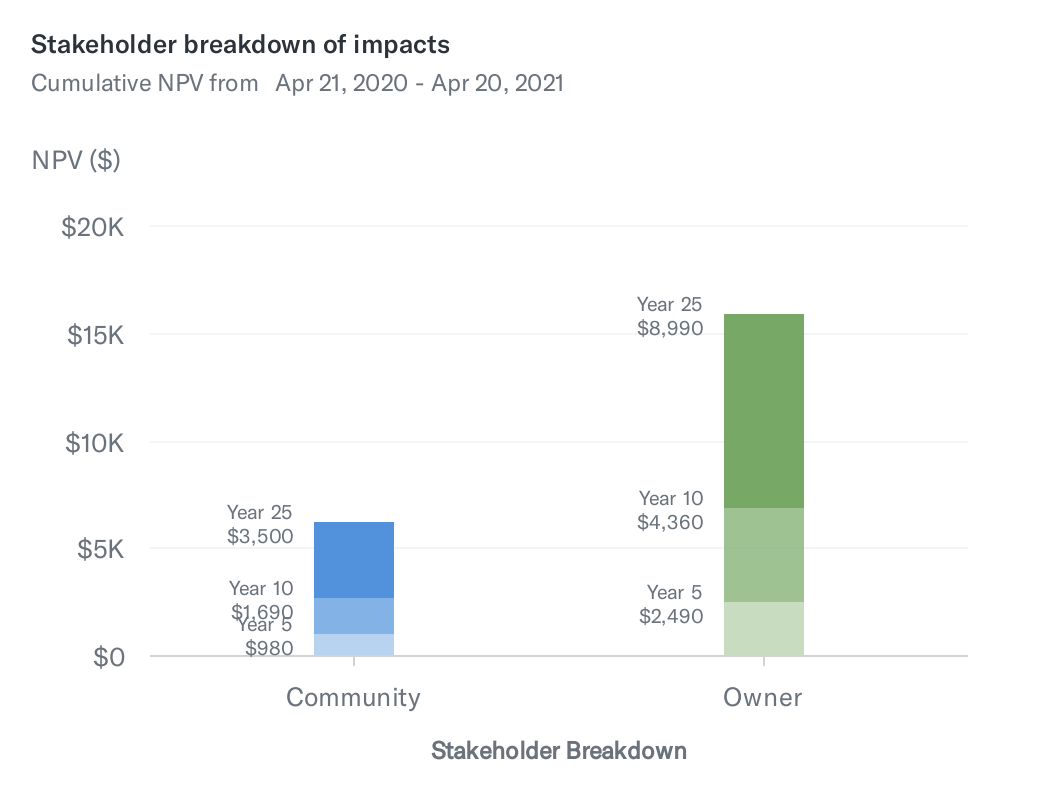
We have more than two decades of experience demonstrating that green buildings are better for people, the environment, and the bottomline. This experience tells us that it can be important and powerful to turn social and environmental impact into dollars and cents costs and benefits.
This motivates a new partnership between Arc and Autocase. Autocase is a team of economists dedicated to making triple bottom line, cost-benefit analysis more accessible to decision makers around the world. This includes providing advanced economic analysis tools for facility managers, real estate portfolio owners, and LEED project teams.
"Our mission is to empower you to create a more sustainable, resilient and cost-effective built environment, by unleashing the power of economic insights at scale, converting a complex analysis into an affordable and easy to use cloud-based software."
Autocase already works with important Arc users, such as Atlanta’s Hartfield-Jackson airport. They have helped this “small city” make targeted, data-driven investments to promote economic stability, social responsibility, and environmental sustainability. Autocase’s economic modeling technology has helped the airport.
- Prioritize investment based on life-cycle cost analysis and total cost of ownership
- Integrate environmental sustainability into decision making, and
- Promote a people-oriented work environment.

Autocase technology mapped these decisions to discrete, dollar-denominated financial, social, and environmental impacts (such as those illustrated in the accompanying table).
Our new partnership brings these capabilities to Arc users. Check out this video that runs through the new capabilities available to users:
After logging in, Arc users will find a new Financial Models tool available for all building projects. You can see if nestled in between Performance Certificates and Re-Entry.

Financial Models provide new capabilities for all Arc users, along with expanded tools for Performance Certificate subscribers and Autocase customers. There are three options:
- Retrospective Analysis for All
- Target-Based Analysis for Performance Certificate Subscribers
- Data Connections for Autocase customers
The following sections provide an overview of each feature and steps to get started:
1. Past Performance Report
Every Arc user can generate Past Performance Reports. This analysis provides a snapshot of the preceding 365 days, including estimates of social, environmental, and economic costs.
- Click “Create a free report”.
- Accept the default time period and default model by clicking Next.
- Review model inputs, accept Autocase terms and conditions, and create your report.
Completing these steps returns you to the “Past Models” view. You will see a new record indicating the status of the new report as “In process”. You will receive an email when the report is complete, and you can return to view or download the PDF. This is usually pretty quick -- barely enough time to grab a cup of coffee.

The PDF report contains a variety of charts and graphs, including my favorite, the breakdown of benefits and costs by stakeholder for the last year.

These are place-based estimates from Autocase’s modeling system. They reflect typical utility costs, estimates of the social cost of GHG emissions, and a variety of other factors.
More information about the models and data used in the analysis are available from Autocase.
2. Business Case Analysis
Arc Performance Certificate subscribers can unlock more capabilities, including custom dates and modeling options. From the Financial Model tab, subscribers can:
- Click “Business Case Analysis”
- Select the end date for the 365 day baseline period and the model type (e.g., net zero energy)
- Review model inputs, accept Autocase terms and conditions, and create a report.
In this case, the model will evaluate financial costs and benefits over a 25-year analysis window. Results are returned for 5-, 10-, and 25-year intervals. Similar to the first case, the system takes a few minutes to run the model and generate PDF. When complete, the document will appear in the Past Models section with the report type “Business Case Analysis”.
The Business Case Analysis report includes the same retrospective snapshot as above, and it adds the forward-looking analysis. The model assumes that the specified target (e.g., net zero energy, a specific percentage reduction, etc.) will be achieved linearly in the time frame specified and the costs and benefits of achieving your target are summarized into cumulative 5, 10, and 25 year projections.
The model can be run iteratively to compare the cost-benefits of different targets or baseline performance levels (i.e., changing how hard the target is to meet).
3. Advanced Analysis
The third option gives Performance Certificate subscribers the ability to transfer performance data to Autocase for more detailed analysis. This is easy.
Simply click the blue “Sync” button and the data will transfer to the Autocase account associated with your email. A small box will appear confirming successful transfer.
Then, you can head over to Autocase/Arc to continue your work with more tools and more comprehensive analytical options.

Note: Access to tools on Autocase.com requires a separate subscription. Performance Certificate subscribers can transfer data; however, they need an Autocase subscription to use it.
Bottom Line
This partnership brings an important new dimension to efforts to support performance-based green buildings. Autocase tools give projects the ability to analyze and communicate social, environmental, and financial performance in dollars-and-cents terms.
The new Financial Models provide a cross-cutting, dollar-denominated view of social, economic, and environmental impacts. This is a unique and powerful view of project performance.
Moreover, the partnership demonstrates our commitment to working with world-class organizations to connect and leverage existing tools in new ways. We are constantly looking for ways to make it faster and easier to generate new, actionable insights.
We hope you enjoy the new tools, and we’re looking forward to your feedback.
